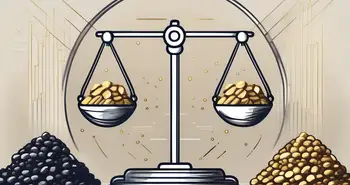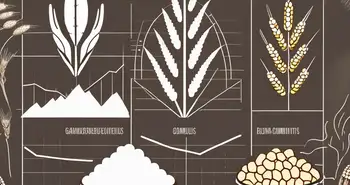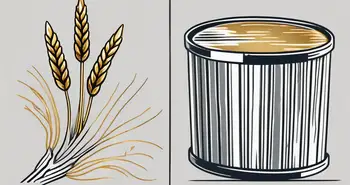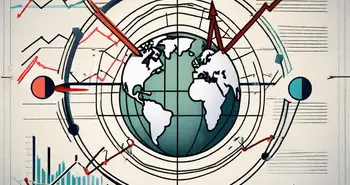Effective Commodity Trading Strategy
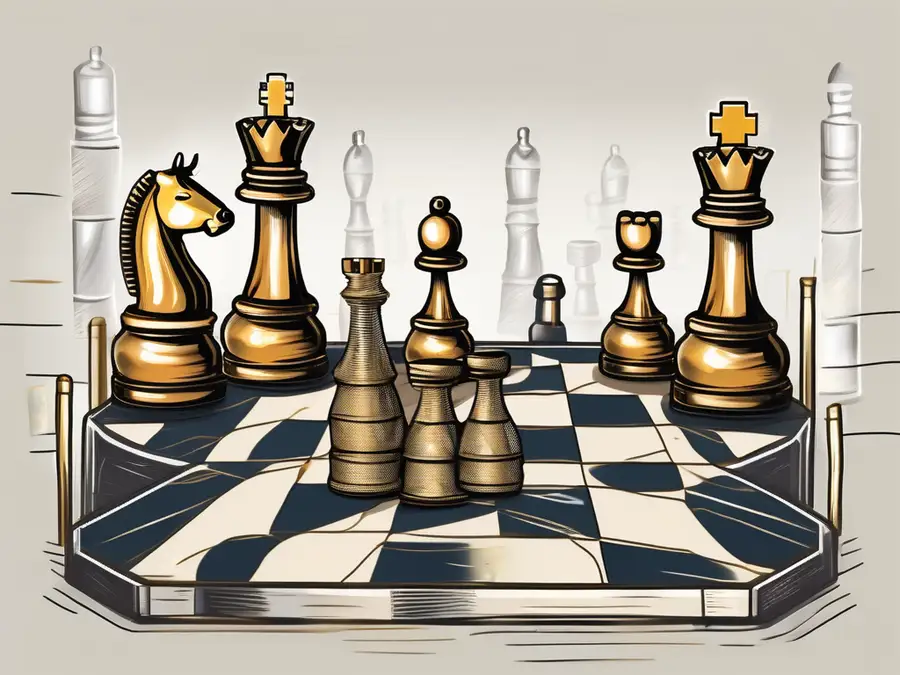
Commodity trading can be a highly profitable venture if you have the right knowledge and strategy in place. In this comprehensive guide, I will walk you through the key aspects of effective commodity trading strategy to help you succeed in this exciting market.
Understanding Commodity Trading
Commodity trading involves the buying and selling of raw materials or primary agricultural products, such as gold, oil, wheat, or coffee. As a commodity trader, your goal is to profit from the price fluctuations of these assets. To effectively trade commodities, it is important to understand the basics of this market.
Commodity trading has a rich history that dates back centuries. The practice of trading commodities can be traced to ancient civilizations where goods were exchanged through barter systems. Over time, commodity trading evolved into a sophisticated market with global reach and significant impact on the world economy.
The Basics of Commodity Trading
Commodity trading is based on supply and demand dynamics. Prices can be influenced by various factors, including weather conditions, geopolitical events, and economic indicators. As a trader, you need to keep a close eye on these factors and analyze their potential impact on commodity prices.
Furthermore, commodity trading is not limited to physical goods. In modern markets, commodities can also be traded through financial instruments such as futures and options contracts. These derivative products allow traders to speculate on the future price movements of commodities without owning the underlying assets.
Key Terms in Commodity Trading
Before diving into commodity trading, it is essential to familiarize yourself with key terms used in the industry. Terms like futures contracts, option contracts, margin, and leverage are frequently used and understanding their meanings is crucial for making informed trading decisions.
Another important concept in commodity trading is market liquidity. Liquidity refers to the ease with which a commodity can be bought or sold in the market without causing significant price changes. Highly liquid markets offer more opportunities for traders to enter and exit positions quickly, while illiquid markets may pose challenges in executing trades efficiently.
Developing a Commodity Trading Strategy
A well-defined trading strategy is the backbone of successful commodity trading. Without a strategy, you are merely gambling with your money. Let's explore the importance of a trading strategy and the steps involved in creating one.
Importance of a Trading Strategy
A trading strategy provides you with a roadmap, guiding your decisions and actions in the market. It helps you define your risk tolerance, entry and exit points, and profit targets. By sticking to a strategy, you can avoid impulsive and emotional trading, which often leads to losses.
Furthermore, a trading strategy allows you to have a clear understanding of the market dynamics and the factors that influence commodity prices. This knowledge enables you to make informed decisions and take advantage of profitable opportunities.
Steps to Create a Successful Trading Strategy
Creating a trading strategy requires careful consideration and planning. Here are some key steps to get you started:
- Evaluate your risk appetite: Determine how much risk you are comfortable taking and establish realistic expectations for your returns. It is essential to strike a balance between risk and reward to ensure long-term success in commodity trading.
- Choose a trading style: Decide whether you want to be a day trader, swing trader, or long-term investor. Each style requires different timeframes and approaches. Day traders focus on short-term price movements, while swing traders aim to capture medium-term trends. On the other hand, long-term investors take a more patient approach, holding positions for extended periods.
- Analyze the market: Conduct thorough research and analysis to identify potential trading opportunities based on technical and fundamental factors. Technical analysis involves studying price charts and indicators to predict future price movements, while fundamental analysis focuses on evaluating the underlying supply and demand factors that drive commodity prices.
- Set entry and exit rules: Define clear criteria for entering and exiting trades, including stop-loss and take-profit levels. These rules help you manage risk and protect your capital. Stop-loss orders, for example, automatically close a position if the price moves against you beyond a predetermined level, limiting potential losses.
- Monitor and adjust: Continuously review your strategy's performance and make necessary adjustments based on market conditions and your own trading experience. The commodity market is dynamic, and staying adaptable is crucial. Regularly monitor market trends, news, and economic indicators to ensure your strategy remains relevant and effective.
Remember, developing a trading strategy is an ongoing process. It requires discipline, patience, and a willingness to learn from both successes and failures. By following these steps and continuously refining your approach, you can increase your chances of achieving consistent profitability in commodity trading.
Types of Commodity Trading Strategies
There are several types of commodity trading strategies you can explore, depending on your trading style and risk appetite. Let's take a closer look at some popular strategies:
Commodity trading is a dynamic and exciting market that offers various opportunities for traders to profit. Understanding the different types of strategies can help traders navigate the complexities of the market and make informed decisions.
Trend Following Strategies
Trend following strategies involve identifying and capitalizing on market trends. Traders using this approach buy commodities when prices are on the rise and sell when prices are declining. By following the trend, traders aim to profit from the momentum in price movements.
One key aspect of trend following strategies is the use of technical analysis tools to identify trends and confirm market direction. Moving averages, trendlines, and momentum indicators are commonly used by traders to determine the strength and sustainability of a trend.
Breakout Strategies
Breakout strategies focus on identifying price levels at which commodities break through support or resistance levels. Traders using this strategy look for breakout opportunities and aim to enter trades when prices confirm a breakout, expecting further price movement in the breakout direction.
Successful breakout traders pay close attention to volume patterns and price volatility around breakout points. These traders often set stop-loss orders to manage risk and protect their capital in case the breakout fails to sustain momentum.
Reversal Strategies
Reversal strategies seek to identify potential trend reversals in commodity prices. Traders using this strategy aim to enter trades when they anticipate a change in the direction of price movement. This strategy requires careful analysis of price patterns and indicators to spot potential reversals.
When implementing reversal strategies, traders often combine technical analysis with fundamental analysis to validate their trading decisions. Monitoring market news, economic indicators, and geopolitical events can provide valuable insights into potential market reversals.
Risk Management in Commodity Trading
As with any form of trading, risk management is crucial in commodity trading. Understanding and effectively managing the risks associated with this market can help protect your capital and minimize potential losses.
Understanding Trading Risks
Commodity trading carries inherent risks, including market volatility, fluctuating prices, and unexpected events that can impact commodity prices. It is important to be aware of these risks and have a clear understanding of how they can affect your trades.
Techniques for Managing Risk
To manage risks effectively, consider implementing the following techniques:
- Set stop-loss orders: Use stop-loss orders to automatically exit trades if prices move against you, limiting potential losses.
- Diversify your portfolio: Spread your investments across different commodities and asset classes to reduce exposure to individual market risks.
- Implement proper position sizing: Determine the appropriate position size based on your account size and risk tolerance, ensuring you do not risk too much on a single trade.
- Stay informed: Continuously monitor market news and events that can impact commodity prices and adjust your trades accordingly.
Tools and Resources for Commodity Trading
Utilizing the right tools and resources can significantly improve your commodity trading experience. Let's explore some essential tools and recommended resources for traders.
Essential Trading Tools
To enhance your trading efficiency, consider using the following tools:
- Trading platforms: Choose a reliable trading platform that provides real-time market data, advanced charting tools, and order execution capabilities.
- Technical analysis software: Utilize software that assists in analyzing price patterns, trends, and indicators to identify potential trading opportunities.
- Economic calendars: Stay updated on key economic events and indicators that can impact commodity prices.
Recommended Resources for Traders
Here are some valuable resources to deepen your understanding of commodity trading:
- Books: “A Beginner's Guide to Commodity Trading” by Matthew Driver and “Commodity Options: Trading and Hedging Volatility in the World's Most Lucrative Market” by Carley Garner.
- Online courses: Consider enrolling in online courses offered by reputable trading educators that specialize in commodity trading.
- Financial news websites: Follow reliable financial news websites that cover commodities and provide expert insights and analysis.
Personal Advice: Throughout my trading journey, I have learned that discipline and continuous learning are the keys to success in commodity trading. Stick to your trading strategy, always manage your risks, and never stop expanding your knowledge about the market.
FAQ
What is commodity trading?
Commodity trading involves the buying and selling of raw materials or primary agricultural products, such as gold, oil, wheat, or coffee.
Why is a trading strategy important?
A trading strategy provides you with a roadmap, guiding your decisions and actions in the market. It helps you define your risk tolerance, entry and exit points, and profit targets.
What are some popular commodity trading strategies?
Popular commodity trading strategies include trend following strategies, breakout strategies, and reversal strategies.
How can I manage risks in commodity trading?
To manage risks effectively, consider techniques such as setting stop-loss orders, diversifying your portfolio, implementing proper position sizing, and staying informed about market news and events.
What tools and resources can enhance my commodity trading experience?
Essential tools include trading platforms, technical analysis software, and economic calendars. Recommended resources include books, online courses, and financial news websites.
With this comprehensive guide, you are now equipped with the knowledge and strategies necessary for effective commodity trading. Remember, success in this market requires continuous learning, disciplined execution, and prudent risk management. Happy trading!
Ready to elevate your commodity trading strategy with a platform that's as innovative as your approach? Discover Morpher.com, where cutting-edge blockchain technology meets trading without boundaries. Experience the freedom of zero fees, infinite liquidity, and the ability to engage in fractional investing and short selling across a diverse range of markets. With Morpher, you're not just trading commodities; you're joining a global movement that democratizes investing. Take control with the Morpher Wallet, leverage your trades up to 10x, and dive into a unique trading experience with Virtual Futures. Sign Up and Get Your Free Sign Up Bonus today, and join the future of trading with Morpher.

Disclaimer: All investments involve risk, and the past performance of a security, industry, sector, market, financial product, trading strategy, or individual’s trading does not guarantee future results or returns. Investors are fully responsible for any investment decisions they make. Such decisions should be based solely on an evaluation of their financial circumstances, investment objectives, risk tolerance, and liquidity needs. This post does not constitute investment advice.

Painless trading for everyone
Hundreds of markets all in one place - Apple, Bitcoin, Gold, Watches, NFTs, Sneakers and so much more.

Painless trading for everyone
Hundreds of markets all in one place - Apple, Bitcoin, Gold, Watches, NFTs, Sneakers and so much more.

